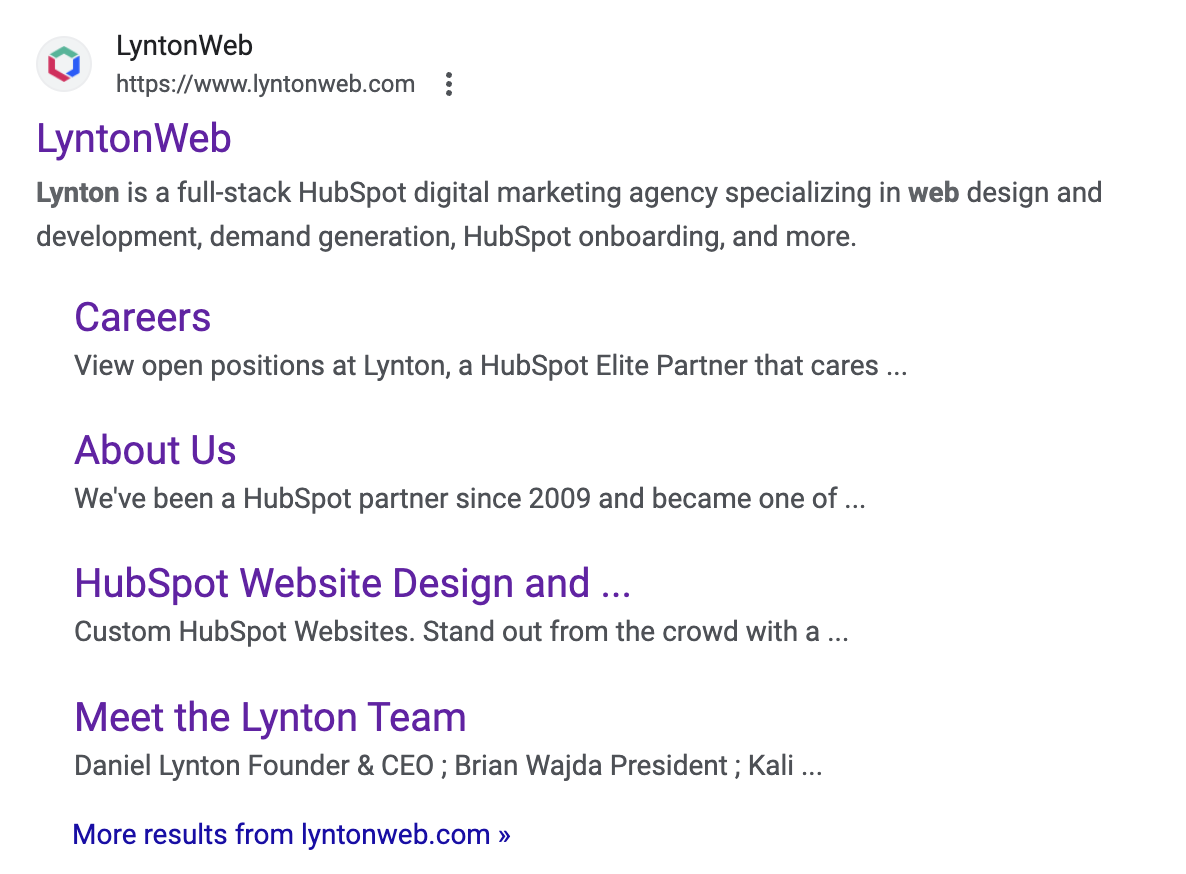When it comes to building strong SEO to attract users to your site, the rules for best practices change frequently. That’s because SEO consistently adapts to reflect modern search habits, as well as Google’s algorithm updates.
What Is Search Engine Optimization?
SEO is a method to ensure your website and its content appear on search engine results pages (SERPs). It involves adding words and phrases people are searching for to find your content, and it helps boost organic traffic.
Google is by far the most popular search engine, making it the typical focus when most marketers are in the process of optimizing. While the concept of SEO is fairly straightforward, its implementation can get rather complicated.
Read more: Inbound Marketing 101: Do’s and Don’ts for Keywords and Meta Tags
Why Do You Need an SEO Strategy?
Complicated or not, SEO is something even the smallest companies need to make a blip on Google’s radar. Search engines are the greatest generator of website traffic, with studies reporting that 53% of all web traffic comes from organic search results.
The percentage is significant, especially compared to the 5% of traffic from social media and the 15% from paid searches. Organic traffic is even higher for B2B companies, topping off at 64%.
If your company is missing the mark with SEO, you’re also missing out on a massive amount of page views and potential customers.
Old and New SEO. What’s the Difference?
As the saying goes, “out with the old and in with the new.” Today, effective SEO means undoing the ways of the past and employing contemporary techniques. Take a look at how old-school SEO compares with newer methods.
Old School SEO
Marketing veterans remember when SEO involved jamming keywords into every possible sentence — and maybe some unreasonable spots, too! Everything has an origin story, though. Successful old-school SEO involved trying to shoot to the top of a search engine by deploying tactics like:
- Keyword Stuffing: Worth reiterating, keyword stuffing involved placing keywords (whether researched well or not) everywhere you could — content, tags, footers, and anywhere else you could conceivably shove it.
- Not Targeting Primary Keywords: Ranking for all keywords under the sun means your website will appear on Page 1, right? Not so much. Without a strategy, many companies would use dozens of versions of the primary keyword they should have focused on. For example, “Converse sneakers” suddenly became “Converse sneakers tennis shoes,” and “Converse sneakers tennis shoes feet” and other unrealistic variants.
- Cloaking: Cloaking involved creating a set of keywords for Google or Bing, then showing your users something completely unrelated on the page. In the worst-case scenarios, this created situations where the keywords didn’t match the content.
New-School SEO
As the internet and other technology evolved, so has SEO. For instance, Google’s algorithm has become far more complex, relying less on the repetition of specific keywords and more on the entire search experience. Essentially, it has advanced as search engine habits have, which means successful SEO in 2023 doesn’t necessarily mean merely ranking No. 1 for every keyword you can imagine.
Instead, it’s measured by a supply of traffic, customers, and leaders through your website – in other words, the things that matter most for your business’s bottom line.
How Do You Write SEO-Friendly Content?
There are numerous and valuable SEO practices to enhance your website, but having strong content is one of the most effective. Here are some tips to improve your copywriting for SEO.
Site Speed
After looking for an answer, your visitors don’t want to wait long to get to it. Google also dings slower sites.
Keywords
Start with keyword research related to your products and services, as well as those used by your competitors. Use keywords in the most important parts of every webpage: page title, meta description, header tags, URL, and text that links to other pages throughout your site.
Website Structure
Technical, functional websites with an easy-to-use site navigation and map rank higher on Google and also make your users’ experience more seamless. This includes metadata that concentrates on primary keywords and relevant copy.
Captivating Content
The type of content you produce plays a major role in your SEO. Content on your website, social media channels, and elsewhere needs to be relevant and provide value to the consumer. Valuable content is well-produced, helpful, and something people actually want to read or view.
Creating content with a human audience in mind, rather than writing for a search engine, will win out every time. Consider publishing a regular lineup of evergreen content or more thoughtful, insightful content that remains relevant and useful for the long haul.
Long-form content tends to rank better on search engines, but be careful: Writing longer for the sake of SEO could work against you if you start to keyword stuff.
Another way to think about it: If YOU were your target audience, what content would be most helpful for you?
Meta description
This short piece of content appears under your page title in search queries. Write one that accurately describes the webpage, and be sure to include a search term. These are typically 155 characters or less. Add more, and you risk getting clipped.
Title tags
In the above image, the tag is the blue text. This tells search engines and visitors about your site or page. Depending on the page, this is also a good place to describe your brand. Again, include a keyword.
Image tags
Since Google and other search engines can’t “see” your images, they rely on the alternative text area of your image for its description. Leave the ALT attribute blank and miss out on many potential search hits. This is especially important for achieving ADA compliance. Describe the picture to the best of your ability and include keywords.
Responsive Design
If your website doesn’t have a responsive design today, you probably have more problems than bad SEO. Mobile-friendly sites — especially ones with optimized images — rank higher and offer a superior experience to your visitors.
Link Strategy
Having a link strategy within your overarching SEO strategy involves implementing anchor links within your copy, backlinking to relevant third-party sites, and ensuring no broken links on your website. Try to link to keyword phrases rather than commands like “read more” or “click here.”
Headlines
Keep article headlines under 55 characters to ensure the entire headline shows up on SERPs. The ideal headline recipe is descriptive, not coy or cutesy. While those tactics certainly draw people in, they may bounce if it’s a bait-and-switch.
Permalinks
Also known as the article’s URL, edit the permalink of your articles to remove filler words and focus solely on keywords. It doesn’t need to exactly match your headline and can contain up to four keywords, with the most important keyword first.
For example: If your headline is Dog Grooming 101: What You Need to Know to Get Started, your URL could be /dog-grooming-get-started.Read more: What Are Blog Tags and Why Do You Need Them?
Blog tags
Blog tags are used, more than anything, to organize your CMS. But they can also be helpful for users searching for blogs on specific topics. Think of blog tags as a label, giving each blog one or two. For example, this blog has a blog tag for SEO but could also include a tag for inbound marketing.
Read more: What Are Blog Tags and Why Do You Need Them?
A Clean Footer
Your website’s footer should have clear contact information and shouldn’t include any unnecessary content. No keyword stuffing here!
Monitor Your Results
Use an analytics platform to monitor your SEO performance so you can regularly make improvements. Never set it and forget it!
When in doubt, tools like SEMrush, Moz, and Ahrefs can help you perform keyword research on your site and your competitor’s sites. HubSpot also features the SEO Marketing Software tool to help you optimize your SEO within your CRM.
Add SEO to Your Content Strategy
While there are many strategic tips and hints for effective SEO, one of them is to use common sense. If you create awesome content that provides value, contains relevant words your audience is looking for and appears on a fast-loading, easy-to-navigate site, you’ve already covered several bases of SEO.
If you don’t have the capacity to start optimizing your site’s SEO, reach out to Lynton for an SEO audit today. We’ll provide recommendations for improvement and content ideas.

![]()



